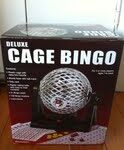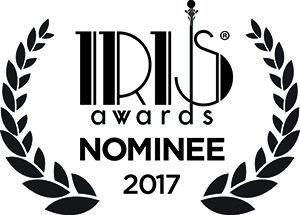Each TOY or GAME has a STORY to share with kids.
Today, it’s the Game of BINGO’s turn to tell its story (with a little help from Grandma Sharon)…

WHAT is Bingo: Bingo is a game in which players mark off numbers on cards as the numbers are drawn randomly by a “caller” or cage. The winner is the first person to mark off five numbers in a row or specified pattern.
WHO invented Bingo: The Father of Bingo is a man named Edwin Lowe, but there is no one person credited with inventing the concept of Bingo, which certainly has a long and interesting history that spans continents and time.
WHERE and WHEN was Bingo invented: The forerunner of Bingo began in Florence, Italy way back in 1530 with a lottery game called La Lotto de Firenze, the first public lottery paying money. La Lotto de Firenze caught on quickly and was followed by drawings in Genoa and Venice, designed to raise funds for public projects.
Lo Giuoco del Lotto D’Italia, meaning “The Clearance of The Lot of Italy” (the Italian National Lottery) came into being with a united Italy as this custom gained momentum.
This custom and pass time is still in existence in Italy today!
By the late 18th century, this Lotto game had spread to France and then to almost all of Europe.
In the mid-19th century, a German Lotto game was developed to help kids with mathematics in a fun way.
It would be the 1920’s when Lotto became Americanized as the game of Beano, often played at carnivals in the southern states. Beano was called Beano because players used pinto beans and lima beans to cover the numbers on their playing cards. Ah, ha! The caller traditionally pulled numbers from a cigar box.
Enter Edwin Lowe, a toy salesman from New York. Edwin happened upon a game of Beano being played at a country fair in Jacksonville, Georgia in December 1929. He was enthralled with the excitement of the players as they filled their cards with beans and called Beano when they won. Edwin knew that he wanted to bring this game to a bigger market and created his own game. As the story goes, during one of Edwin’s test games an excited player jumped up and shouted BINGO instead of Beano.
The rest is Bingo history.
HOW did Bingo become so popular: Now this is an interesting side-story to the game of Bingo…
A priest from a parish in Wilkes-Barre, PA approached Edwin with a problem he was having with parish finances. The priest wanted to make Bingo a fund-raising project, but Edwin’s $2.00 Bingo game didn’t produce enough money winners to draw enough people to make the project a success.
Edwin solved the problem by hiring Carl Leffler, a mathematics professor at Columbia University, to develop 6,000 new Bingo cards with non repeating number groups.
The people came, the parish in Wilkes-Barre was saved and Bingo was on the map. By 1934, there were more than 10,000 Bingo games played each week in the United States. Wow.
The largest Bingo game is believed to have been played in New York’s Teaneck Armory – 60,000 players, with another 10,000 turned away at the door. Double wow.
But how about this as one calculation shows… there are 552,446,474,061,128,648,601,600,000 possible number arrangements on the standard Bingo card. Triple wow!
Get your kids and grandkids in on the fun, the excitement, the astounding mathematics and the great STORY of the game of Bingo. There’s something wonderful about knowing the STORY!
Join me here each day in July for TOY STORIES on 365 Days of Literacy for Kids! A little fun, a little learning and a little “ta-dah!”



